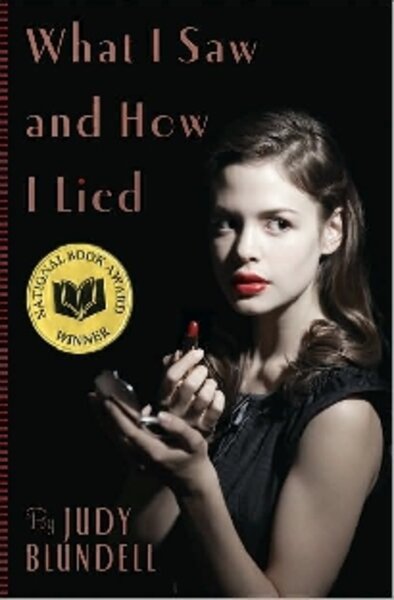What I Saw and How I Lied
Loading...
In 1947, New York is a pretty safe place to be a teenager, but Evie Spooner’s mother still wants to protect her. The 15-year-old, however, doesn’t appreciate rules, especially “No lipstick till you’re 18.” All Evie wants is to smoke candy cigarettes with her friend Margie and listen to Sinatra.
At the outset of What I Saw and How I Lied, the recent winner of the National Book Award for Young People’s Literature, Evie’s world seems fairly peaceful. Her stepdad, Joe, has returned to Queens from the war with a ruby bracelet for her, enough money to open three appliance stores, and the dream of getting rich off the postwar boom.
Then, suddenly, Joe announces that he, Evie, and her mom are going to Palm Beach, chasing summer all the way to the “ritziest town in Florida,” to a place with just enough glamour and explosions of pink and purple flowers to seem dreamlike.
What Evie and her mother don’t realize is that they are the ones being chased, and the consequences of that chase will change everything. That’s when the teenager begins to think that something adult and mysterious is happening and the story takes off.
Foreshadowings hint at larger, more ominous things – the cool, dark movie theater where Evie and her beautiful mother share popcorn with handsome, secretive Peter; the burning heat relentlessly bouncing from the sidewalk and the sand; Joe’s hand curled into an angry fist.
Whether or not young readers will appreciate the book’s 1940s setting and slang (kiddo, keen, girls falling for heels) or the story’s sparse, film noir quality, they will likely be drawn into its dark mystery. The slightly smoldering romance of this novel and its emotionally charged language make up for its often heavy-handed foreshadowing.
If you peel away the layers, at the core of this coming-of-age story is escape. Joe is running from the war and from Peter, his former Army buddy. Peter turns his back on his family and his circumstances.
A Jewish couple, friends of the Spooners, become locked into a questionable arrangement with Joe in hope of escaping their identity.
And Evie, in desperately trying to leave her childhood behind, realizes that the feeling of being a grown-up comes and goes.
Early on, Evie and her mother relax and laugh “as the tree shadows stretched toward the porch and lights came on in the houses.”
But by the novel’s end, all the characters have discovered the consequences of their lies.
Augusta Scattergood is a freelance writer in St. Petersburg, Fla.






